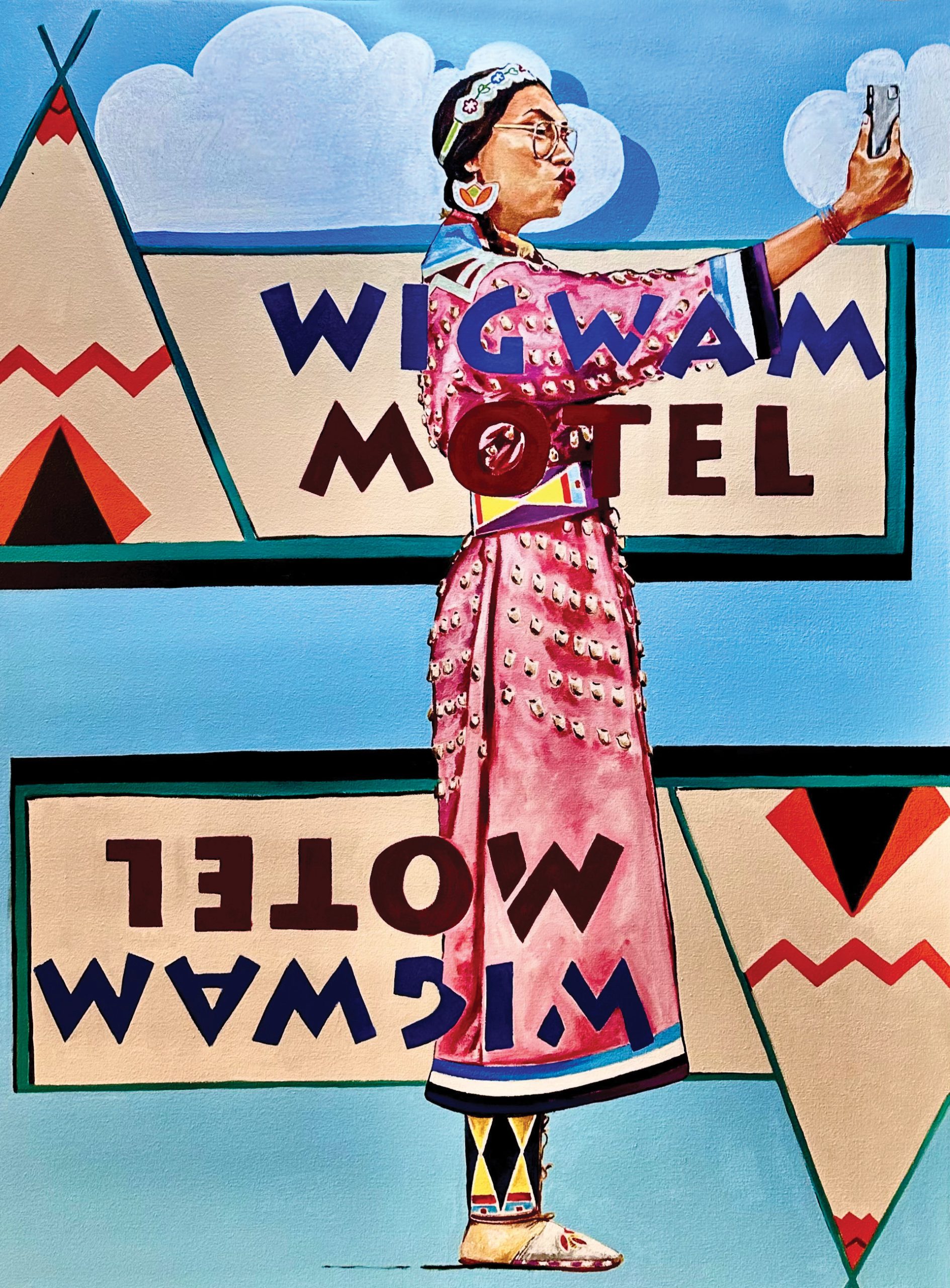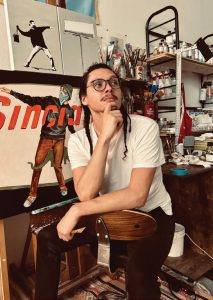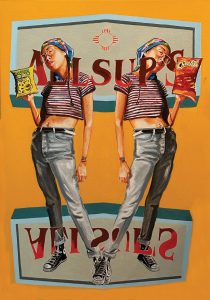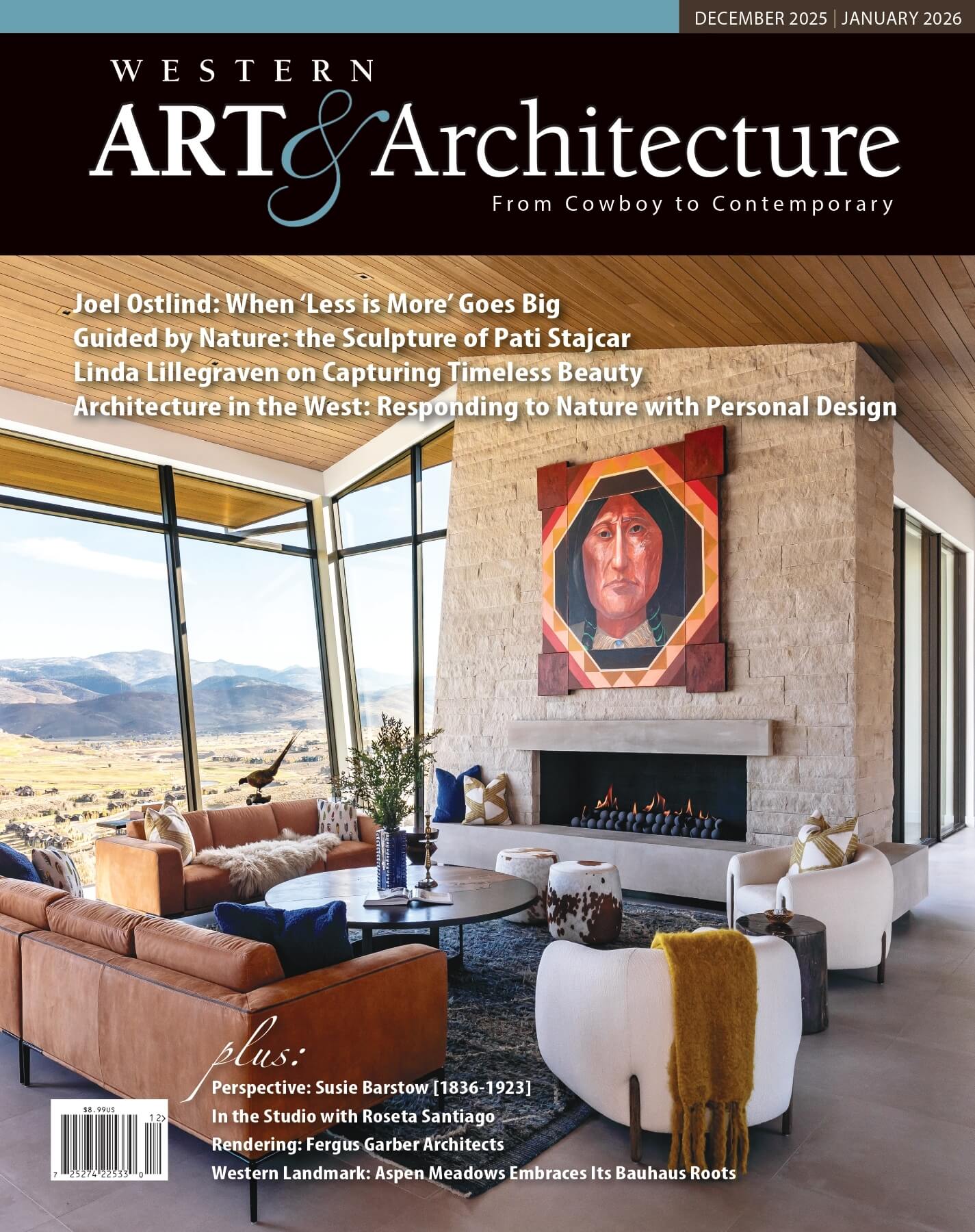
04 Jul Artist Spotlights: Del Curfman
Del Curfman’s joyously colorful figurative paintings deliver pointed messages about the present-day societal issues Indigenous peoples face. Take, for instance, his Selfie with a Stereotype, in which Crow artist and activist KamiJo Whiteclay poses in traditional dress while pursing her cherry-red lips, fashion model-style, to snap a selfie in front of a sign for an iconic old Route 66 motel chain featuring tipi-style accommodations. “The term ‘wigwam’ actually refers to Native wooden structures from the Southeast, while tipis were the homes of Western and Northern Plains tribes,” notes Curfman of the cultural appropriation and dissonance at play. “So, the symbols and the terminology don’t really match, and my painting shows someone from a tipi culture reclaiming that space.”

The work is part of the continuing series Curfman, now 32 years old, calls Faces of Our Land: Decolonizing Urban Identities. Since 2020, he’s been developing this project, which “aims to explore the urban Indian diaspora, providing the audience with an honest, real, in-depth exposure to the urban Indian experience.” That goal has led him to extensively research the issues he tackles, interviewing his contemporary Indigenous subjects about their experiences and actions related to such vital topics as mental and spiritual health, connections to ancestors and the land, and the commercialization of Native culture. Then, through his paintings and accompanying videos and texts, he shares the stories he’s gathered.

Food Desert Resiliency | Oil on Canvas | 24 x 18 inches | 2024
In many ways, Curfman’s life has led him to and uniquely suited him for this work. He was born and raised just outside the Crow Reservation in the town of Lockwood, Montana. In high school, he says, “I started telling stories through art.” After graduating, he moved to Washington, D.C., to live with his uncle, who worked in the Bureau of Indian Affairs at the Department of the Interior. His uncle, in turn, recognizing Curfman’s talent and passion, encouraged him to apply to the Institute of American Indian Arts in Santa Fe, which he entered in 2012, graduating in 2017 with a double major in studio arts and museum studies.

Code Name Spirit an American Indian Trope | Oil on Canvas | 40 x 30 inches | 2024
Since that time, Curfman has focused his artistic practice on work that explores the present-day Native American experience — including the previous series, Beyond Footsteps, portraying well-worn beaded moccasins, and Vanishing, in which past and present-day Indigenous people in tribal dress seem to be evaporating in streaks of color as they move through space. But his current and ongoing project feels like the most satisfying fulfillment yet of his intentions, combining deep research with arresting images — which he first draws digitally and then paints in oils on canvases that he stretches himself — that feel cathected with a power to change minds and, possibly, society. “I’m giving my audience the opportunity to investigate and engage with my subjects on a higher level,” he concludes. “Maybe then, they will start asking questions.”
Curfman will be showing his work during the Santa Fe Indian Market, August 16 to 17, and in a solo show, August 1 through September 2, at the Santa Fe Convention Center.
Based in Marin County, California, Norman Kolpas is the author of more than 40 books and hundreds of articles. He also teaches nonfiction writing in The Writers’ Program at UCLA Extension.






No Comments